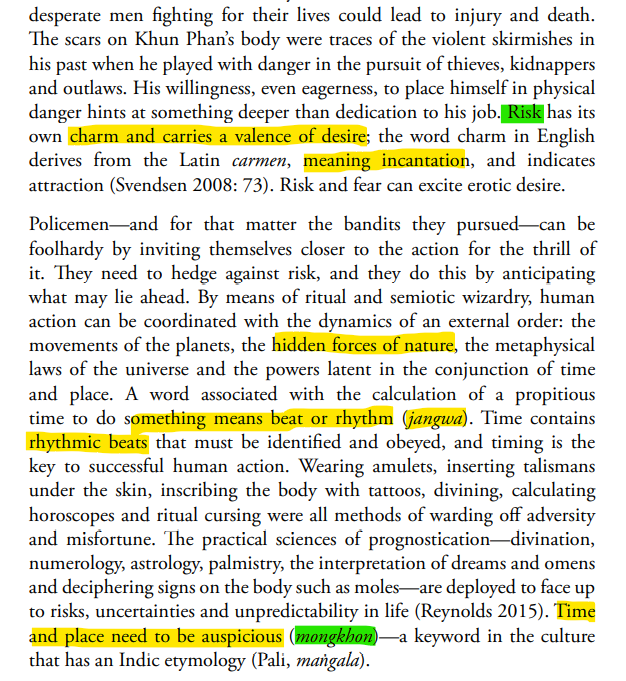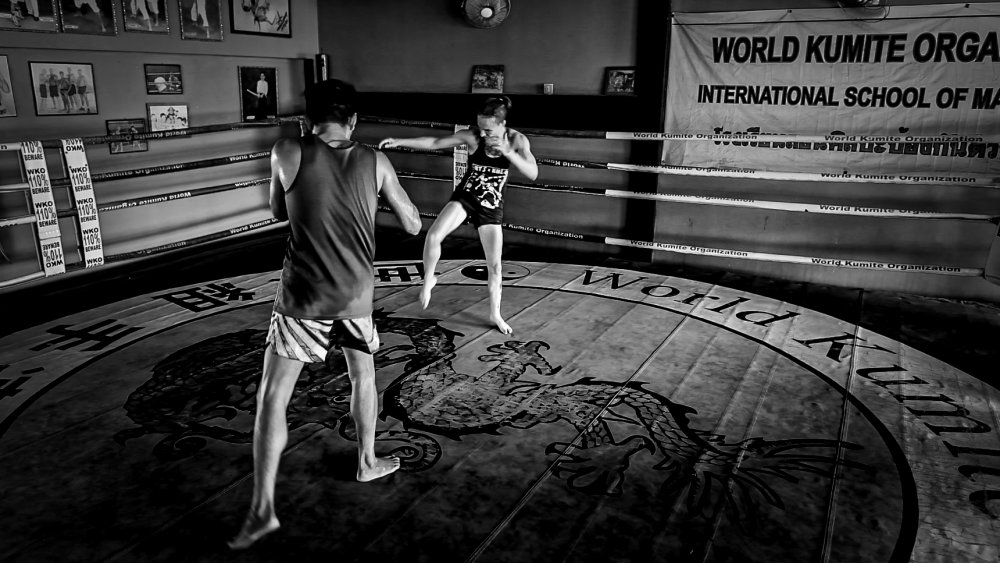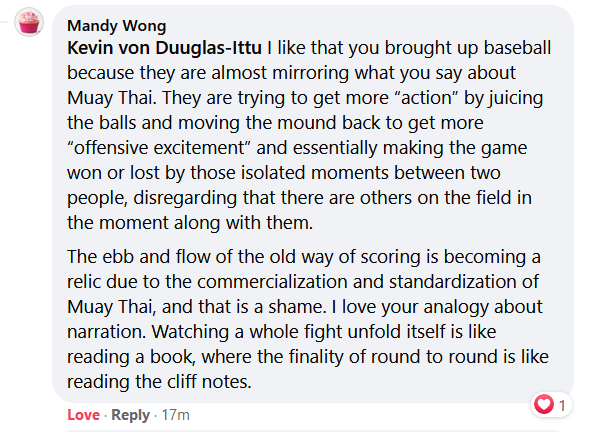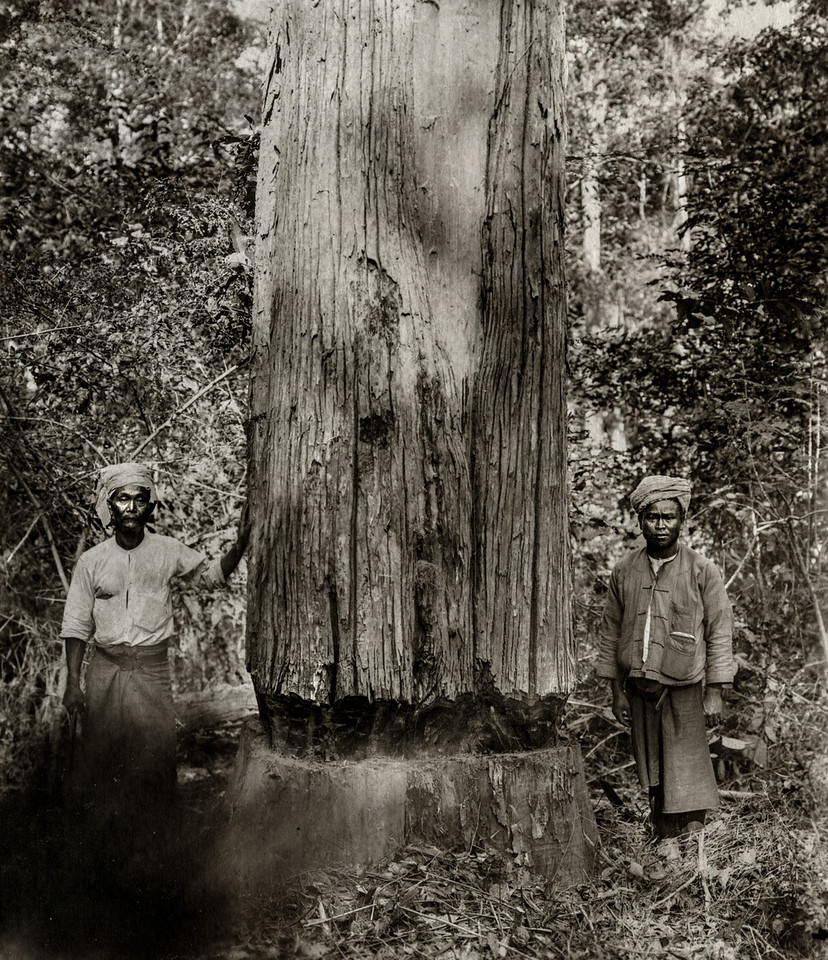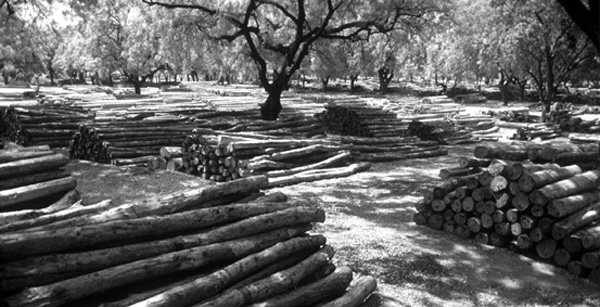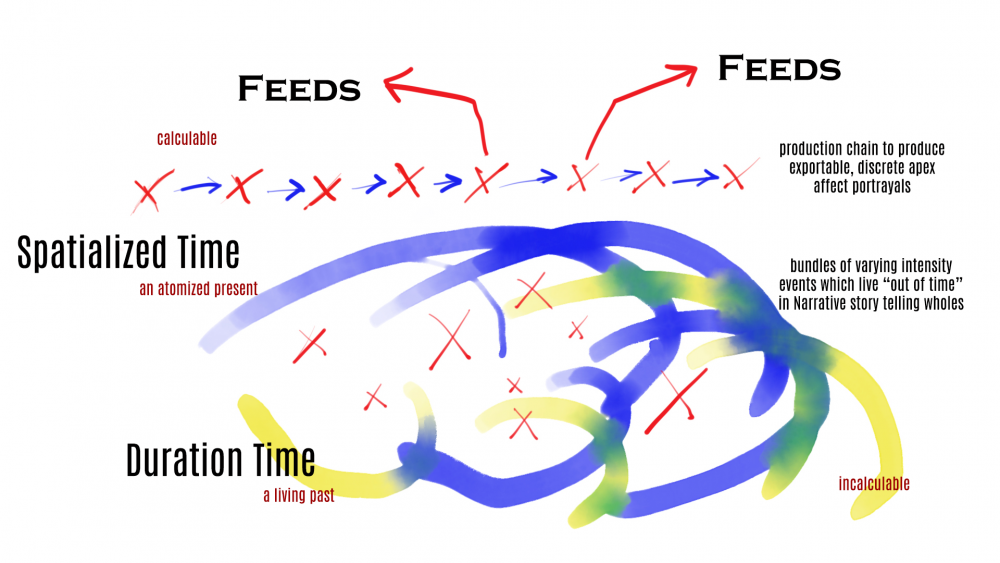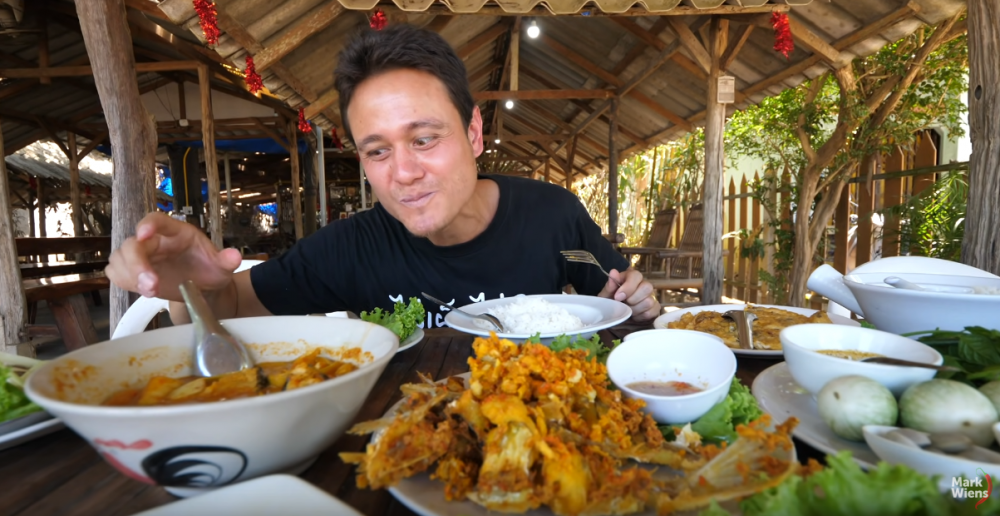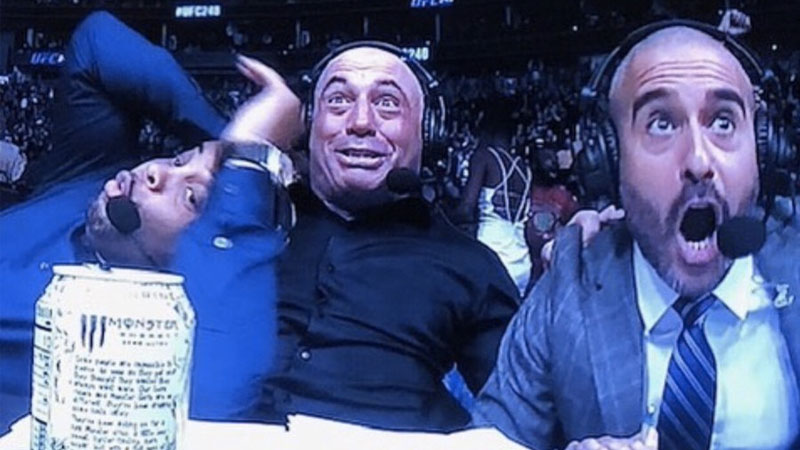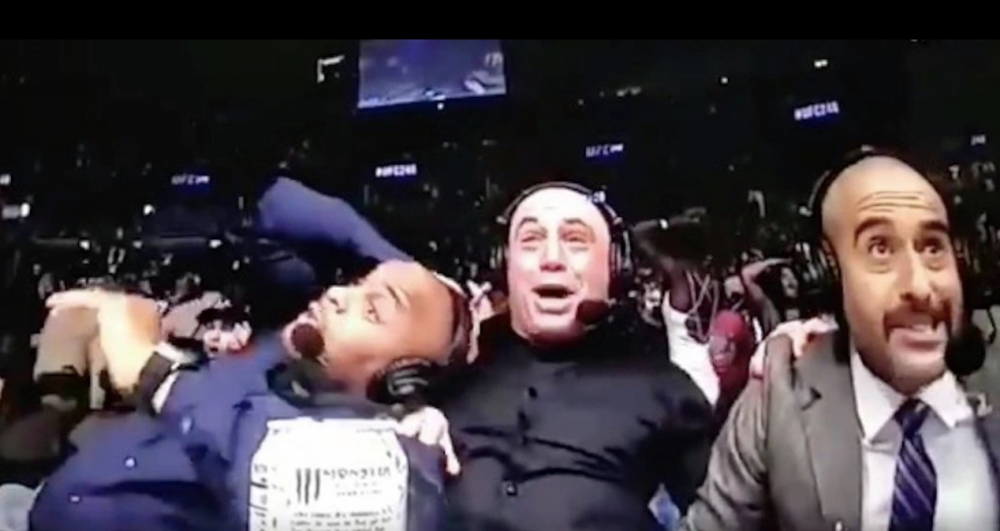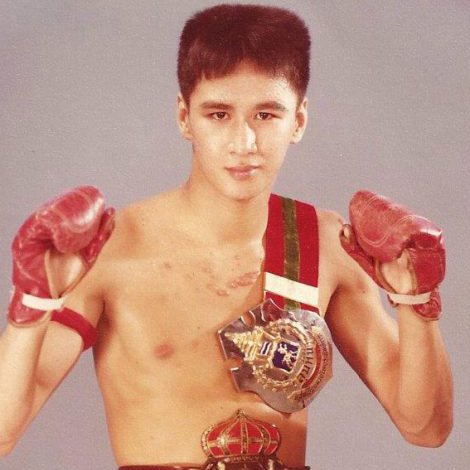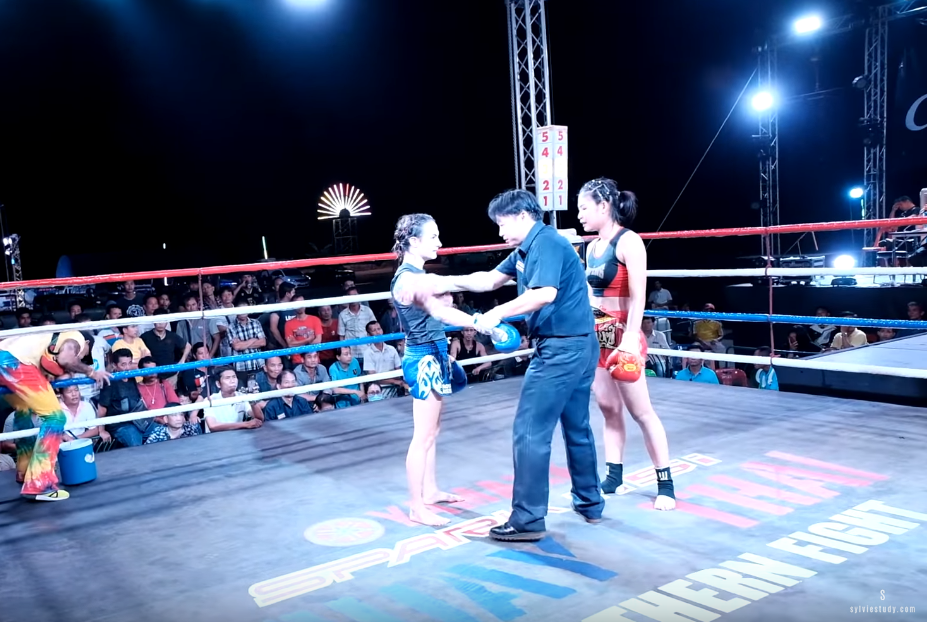-
Posts
2,253 -
Joined
-
Days Won
496
Everything posted by Kevin von Duuglas-Ittu
-
Some articles that might help on this topic, especially this one. Many people can't even tell how hard they are going: Brain Science: Why Sparring Gets Out of Control – Neurology and Muay Thai https://8limbsus.com/blog/brain-science-sparring-gets-control-neurology-muay-thai Also this: The Challenge of Non-Ideal Sparring Partners and Avoiding Bad Habits https://8limbsus.com/muay-thai-thailand/challenge-non-ideal-sparring-partners-bad-habits and this: Fear of Escalation in Sparring and Training Aggression as a Skill https://8limbsus.com/muay-thai-thailand/fear-escalation-sparring-training-aggression-skill
-
In further, thought to be disconnected reading I came upon this passage discussing the importance of timing, and how it is relates to protective magical practices - in this case, those used by a very famously harsh Thai policeman of the South, who used magical practices to protect himself. The timing (the jangwa, a word used repeated in Muay Thai developmental training) is a focus of magical prognostication. Also in this passage is the mention of "mongkol" (auspicious), which protects the head of the Muay Thai fighter: from "Power, Protection and Magic in Thailand: The Cosmos of a Southern Policeman" (2019) CRAIG J. REYNOLDS
-
There have been several Thai renderings of the tale, but the tale's origin, is from (only 8 [not 12]) lines of a Burmese Chronicle. I think this is the essay: https://8limbsus.com/wp-content/uploads/2014/03/Modern-Muay-Thai-Mythology-Peter-Vail-first-pages.pdf If it isn't that essay, it's another by Peter Vail in the original link I gave. I followed the citations in my reading and did read the 8 lines (in translation) at some point. That it is the origin seems to be on pretty firm footing.
-
I returned to these older thoughts on thinking about Sylvie's recent work with Karuhat. She's trained with him for years - the most comprehensive time of that are these 30 days of commentary. Their training has gone slowly away from technical instruction and has become more and more just what you see below. It's "sparring", but it isn't even sparring. Everything for him, in these sessions, I believe is about tempo change...and tempo regularity. You lie or feignt with regularity, you stiffen others with suddenness or the unanticipated. He isn't really creating openings is Space (a visual hole that is undefended) as much as he's creating openings in Time, incisions which will then produce openings in Space, the undefended. What these sessions are, though, are invitations to ride along the changing train of rhythms. To learn to feel the changes in rhythm, the feel for the kairos. Of all the fighters we've studied and been around there is not one more definingly blessed by Phra Pirap than Karuhat. The short recent video above is just some of that play, the transference of rhythm sensitivity, that makes the art of Muay Thai. It's a very short video, maybe 90 seconds. Just watch him. Look at what matters to him. See what he is watching and how he creates.
-
For a side path deeper dive into a Philosophy of Kairos, "the perfect moment", read my 2009 thoughts: The Unrare, Assemblage and Implicate Power: Kairos, Complexity and Ethical Greatness which tensions Nietzsche and Spinoza. The concluding paragraphs in that essay, thinking about assemblages and moments that make the difference: Tyrany of Combination: the Higher Man It should be noted that Nietzsche, after he proposes his new rare thing – that of the five-hundred hands – he maintains is rhetoric of violence, closing the window of sheer complexity and confluence. Such a creature is said to be one that can “tyranize” the kairos, and seize the time. The image is necessarily for Nietzsche, one of domination. The Typheus he raises is one of transmutation, much as the kairos of Christ, an entrance into a linear history that forces a radical change. But perhaps Nietzsche’s conception of transmutation is too dominated by his necessary values of high and low, rare and common, master and slave, for him to think outside of such binaries for long, like a cosmonaut leaving his space capsule. He may have too much a faith in opposite values, and lack the variability of a calculus of affection, which may be able to track the more sinewous lines of power which operate more along fissure of body compositions, parts put in ratio and assemblage, and less in terms of lower and higher, that nostalgia for power proper. Unlike Spinoza who sees such hands everywhere, transmutation everywhere, avenues for power, pleasure and increase, everywhere, bodies assembling in an infinity of expressions, all of which our nature calls us to become, like Lessing’s Conti, more aware, Nietzsche’s higher man, even if he is forced to let go of for a moment his solitary conception in order to embrace the necessary involution of inside complexity towards outside complexity, can only envision a greater and more monstrous form of himself, ascending. What is in question, afterall, is not whether Nietzsche was wrong, or right in any strict sense; but rather, in his glimpse of the nature of genius as a complexity of relations, and not a rare quality of a person, Is his conception of tyranny and domination are afterall the most potent, the most delinating way to see. For all his rhetoric and examination of power, is Nietzsche’s view of complexity necessarily the most powerful possible? Outside this Typhean wave of hands, voices and heads, grasping at and holding down the fleet-footed god by the hair, what seems most absent is the living communication between parts, taken in their own affect. There is something amiss when one only sees movement in “greatness,” and does not see change in continual proximity, the awareness that one is always amid five-hundred hands, and that the forelock is always agrasp. Lessing’s bürgerliches Trauerspiel informs us not only of the affective capacities of the rising bourgeois, that they too are capable of suffering enough to bring forth the tragic, but also warns of the nature of tyranny itself, as it seeks to seize the moment. When the Prince, enthralled with love for Emile, grants his chamberlain the right to do anything to prevent her marriage, all is deemed rightful to be done. It is of course a granting that will lead to her own death: Marinelli: …Will you allow me free reign, Prince? Will you agree to anything I do? The Prince: Anything, Marinelli, anything that can avert this blow. Marinelli: Then let us lose no time (17, Act One, Scene VI). The capacity to tryannize, to assemble forces, is but the first of the kind of knowing that brings about power and capacity to act. The painter does not only tyrannize his canvas. It is rather the affective knowing of not only the “what” but the “how” and the “why” that composes that assemblage creating true liberty. The artful moment is one that always lies at hand, and never slips from view. The tyranny of it is grasped rather with the softest of hands, which means not of hands less sure. What Spinoza’s view of bodies grants to Nietzsche’s conception of kairos is that there is a living, affective line of desire that traces itself out between what we often conceieve of an discontinuous parts. By understanding that bodies are formed ephemerally, by perspective, constituent of all the ratios of speed and communication involved, the world itself becomes animated with force and play. Each of us is understood to be in loop and satellite with others: not only other persons, all other things, the ratio of things becoming real cognitive centers of perception and action. What it does is place the finality of act everywhere, the kairos of a Christological incision everywhere, within an immanent field, and our direction of action always on a line of desire. Our stake fundamentally is in what surrounds us, so that knowing is assemblage.
-
Damn! I was thinking of Dengue. But the same anti-mosquito concern is maybe there with COVID. Rainy season, avoiding unnecessary mosquito exposure, taking that extra step vs mosquitos could be important. These are things people should think about. Anywhere you might get malaria (forested areas, border areas Google tells me) you could also get Dengue. In fact, you can get Dengue even more readily than Malaria. Urban Dengue is a thing.
-
This was a huge problem for Sylvie. She's a 100 lb fighter and years ago as an amateur there were maybe 5 people in the whole country she could even fight around her weight, even giving up weight some. Also, a big problem, is that coaches like to manage their fighters, a lot of it coming from the example of boxing (which often has a much larger, more organized fighting pool). Coaches definitely try to massage the matchups to help you improve. They want you to win, or at least have a really good chance of winning, to improve your confidence which is important. They also, for commercial and brand reasons want to have winning fighters. Winning fighters bring more clients. For us it was a big no-go. Every time a coach would try to slow Sylvie down, or manage her, we'd distance ourselves. There was no path to become the fighter she wanted to be following any of those "managed" routes. And it has led to a spectacular career of over 260 fights, the most in history. But...it has lead to enormous social costs, a constant shifting, and facing a lot of opponents with huge advantages on her, which also has lead to big breaks of confidence at times. This is all to say that you are describing a huge thing, especially in female Muay Thai, and that we took a very radical path in response to it, paid big consequences, and even to this day we are fighting this battle of control over opponents. Ten years in it still happens. For us, fighting is precious. Even bad matchups. There is a cost, but it is worth it. There is nothing that can teach you more than a fight, and fighting a lot gives you perspective. But...the social web of support is super important to a fighter, and coaches can be very sensitive to this stuff. In this case all you can do is give a double message. "Coach, I really want to fight, I'll take a mismatch" AND "Coach I respect your opinion" and see how it shakes out.
-
I don't know anyone taking malaria pills, though I'm not saying its something you shouldn't do. It's just not something I've seen...but, something that I've seen nobody talk about is that IF you contract COVID and malaria at the same time that might be some very bad news. I would imagine that malaria would complicate everything that COVID could possibly do to you. But that is just a bro science take. Malaria lowers white blood cell count, COVID sometimes raises it. But, malaria can be life threatening at times, so at the very least it would complicate diagnosis. All that is to say, in areas of malaria anti-malaria steps might be more prudent than in the past. Also, some areas of Thailand are much more malaria prone than others.
-
Yesterday we put up a few rounds that I randomly filmed with the work that Yodkhunpon is doing with Sylvie. I just was sitting at the edge of the ring and was enjoyed the energy of what was going on, so rolled the camera a bit. We stitched the together and posted them on YouTube (above). I've watched these rounds a few times, each time seeing something different, new, but today I'm seeing more deeply into them. If you called these rounds "sparring" they would be very different than what westerners think of sparring as. "How come Yodkhunpon isn't hitting her! (for 20, 30 seconds at a time)". We expect "sparring" to be two fighters "going at it" (lightly, or more full on) in a constant intensity of back and forth. Each trying to "get" the other. This corresponds to also how we tend to see fighting itself. Two fighters going at it, 5 rounds, add up the damage points. Some of these thoughts flow out of yesterdays: "The Stupifying of Scoring: How Duration Creates Meaning Through Narration", check that out at the bottom of this post below. When you watch what Yodkhunpon is doing - he's not always all padded up, but on this day he was - is that he's walking...really dancing...Sylvie through the forms of fighting that express his era, the Golden Age of Muay Thai. When he is retreating, or floating, he's not taking it easy. He's posing a situational problem in a hypothetical narrative. He fade back, bouncing his lead leg. This is a fighter who has a touch of the lead. How do you solve not only that fade, but also the position of the leg bounce (a very common defensive tactic). Sylvie's talked about how Karuhat, more than maybe any legend we have worked with, teaches "how to read" an opponent. She compares this "reading" to literal reading, where the position of the opponent - which leg they are on, the shifting of their weight, where the open side is, where the guard is - is like a letter, or a word. Once you know that "word" you know how to read it. You know it's (limited) possibilities of attack, and its inherent weaknesses. As your opponent moves through their "vocabulary" you literally are reading them, like words or letters. Your reecognize and see, perhaps even using the same part of the brain that reads words and letters. Sylvie learned of this in her 30 days with Karuhat which you can see in the Sylvie Intensive Series, you can watch that here. We've never seen anyone who can read quite like Karuhat, but great fighters of his day were readers. What Yodkhunpon is doing is moving Sylvie through words, and positioning her in Narrative sequences. In the West we learn and rehearse "combos" and "tactics". Counters, Attacks and Defense. This is very different stuff. Yodkhunpon, because he has the music of the Golden Age in him, is instead like a dancer who takes the lead, and waltzes his partner through Narrative shapes, posing puzzles of words to sound out and solve. Sometimes it's a position, like the anti-clinch arches he takes, or the bouncing leg, sometimes it's situational, like being overcome by repeated and repeated knees in dominance (a huge score in Thailand). He is guiding really melodies of fighting, and building word-solving. Importantly, these are not memorized & repeated reactions and solves. These are extended out (it's 10 rounds of work), pulled into themes and varying psychological states and degrees of fatigue. These are stories. This goes to the more profound differences between combo-centered western style kickboxing fighting - and their formats of mandatory aggression - and the Narrative fighting of Thailand's tradition (linked below). Ultimately, of course, if you master reading and narrative you should be able to fight free and dominant in any fight aesthetic, but until you do, you are just feeling your way forward. Memorized combos and bull-rushes will definitely win in promotional fighting that urges & rewards these tactics. Very much so. But, its a beautiful thing to seek a layer below those approaches, into the older sense of Time and agonistic struggle. That's what I see here, when I watch Yodkhunpon move and set puzzles. These puzzles are of position, and of dramatic form. These are not mechanics. My related piece from yesterday:
-
Just ran into this article which exemplifies the Rogan Crew effect, in fact it documents through feeds and celebrates it. There will be much more of this in coming broadcasts, for better or worse: Joe Rogan is going viral again for his hilarious UFC 261 reactions https://www.mmamania.com/2021/4/25/22402395/joe-rogan-is-going-viral-again-for-his-hilarious-ufc-261-reactions
-
The richness of Narrative Storytelling. Or, how events register as important in very vital ways, retroactively, in a Duration. In scoring a fight, if you are just calculating "damage" (health) points, in a promotion that is dictating clash after clash, you have a significantly reduced event space. The number of things that can register, become minimal...because they can only register in terms of their intensity, as they are experienced AT the time of their occurrence. These are discrete events, cut off from other events. But, in Narrative space, in Duration, the intensity of events, specifically past events, changes over time. Just as the Kaizer Zoze reveal in The Usual Suspects (1995): Or Ali's Rope A Dope vs Forman. When fighters become storytellers they are invited to bank, to deposit details, which will come to the fore later. These skills of storytelling, if rewarded by the criteria, increase and enrich themselves. The complexity of the art increases, because the permutation of what matters, what will matter, also increases.
-
Opening another line of thought. Instead of arcing back to agrarian models of arc'd time, complexity in game play may also be revealed in narrative storytelling. Or, how traditional Muay Thai may be more like Chess than you think. Narrative arc structure could reflect essential complexification of game play, the density of possible moves and positions. Or, why 5th rounds in Thailand's Muay Thai may lack drama.
-
I hope Mandy doesn't mind, but I want to bring in her comment on the Facebook share of this post, because it links up with super important thoughts about the way we are changing, as human beings, even in the last 5 years: My response was this: We are undergoing a visceral and intellectual change, and its happening quite quickly. We can't even think in terms of decades. Two or three years and our perceptual capacities have already been altered, the spectrum through which we can even take in the world has been re-temporalized, locked into shorter and shorter, more and more affect-intensive tempos. And yes, a primary means by which this is happening in through our "entertainment" choices. It's not that enjoying this or that is "bad" (though it may be), its that in enjoying this or that that has been structurally honed to produce certain changes, we are unconsciously being shaped by it. We are being dosed, in the very same way high-fructose corn syrup was/is dosing us. The inert knockout is corn syrup, the highlight reel is corn syrup. The tomahawk dunk or deep, deep homerun is corn syrup - you want to see a surreal speculative entertainment evolution of this, check this out. These are all spikings of our brain. I'm not saying: Never have a sugar rush! But, when analogical sugar becomes the basis of the very structure of the things we consume, and we start cheering for the change in traditional, very high-level fighting styles, just so we can get our Jones for sugar, we are at an important juncture. While we can focus on things like the role of SQUEE videos, or meme-ification of the political, for instance, I think it worthwhile to consider the fates of very old things, like the narrative structures of Muay Thai scoring in Thailand. Because once the Old Ways of perceiving/experiencing are gone, they likely are not reclaimable.
-
There are two/three important terms in the Philosophy of Deleuze & Guattari. Territorialization, and Deterriorialization (and re-terriotorialization). There is a lot in this Philosophy which is purposively obscurantist, in the way that one might write poetically, to draw in the maximum number of associations and ideas, to develop a kind of intensity in your expression, but at the same time letting that density of idea act as a filter, letting in only readers that only want to dig for, and help create the meaning. There is much debate as to whether this kind of writing is a good thing, or a bad thing. Is clarity of the highest value when expressing ideas? Does clarity trump all other expression? Maybe. But in the pleasures and powers of reading and writing there are other powers. For a moment though I want to simplify these terms. Make them plain. Because they help with what I'm talking about in terms of Narrative powers and meaning-building. Picture this. When something is IN the earth it is grown in, it is territorialized. It is in its territory. In its context. It is within the realm in which it is made. It is earthed. A strong, hardwood bodied teak tree, in the ground in which it developed is earthed. If you want to know what that tree is, you understand it in its territory. It's immense size is composed of a duration, which is to say that its past is presently living in it. It is a temporal whole. And this whole extends well beyond its physical borders or properties, no matter how we would like to isolate them. If the tree is harvested, cut down, it has been de-terriotorialized, in Deleuze & Guattari's terms, it has been unearthed. It has been torn from its contexts, the living whole which produce it...and the living whole which hold what it is...its story. If it is cut and stacked (these are much smaller teak logs), the de-territorialized (un-earthed) teak has been re-terriotorialized. It has been re-earthed. What does this mean? Well, if you were a home builder and you lived around lumber yards, "where teak comes from" wouldn't be a forest at all. It would be a place where it is stacked. This is where the teak (material) would gain new context, and new meaning. We get this all the time with food. "Remember to pick up some chicken!" doesn't mean: "Go catch a chicken!". It means: Go to the chicken-gettin' place, where all chicken is found. The territory of Chicken is wrapped in plastic, cut into body parts, on refrigerated shelf. When things like teak or chicken are re-terriotorialized, re-earthed, their original stories are pretty fundamentally lost, or cut off. Our narrative understandings of them begin with where they come from. They come from the lumber yard, or the poultry shelf. The branch of Philosophy wants to call our attention to these kinds of powerful recontextualizations of things. They argue that a fundamental force of Capitalism, is its power to de- and re- terriorialize things, people, ideas, feelings, to tear them out of their "earths", and to put them into new earths. This can be creative and productive, but it can also be destructive and debilitating. The first step though is to just even be aware that un-earthings are even happening, and that they are happening everywhere. If we lose track of these things we just get presented with a "reality" of the world which we can become trapped in. We literally think that chicken comes from the store. What does this have to do with Muay Thai scoring? Let's put it this way. When you start bending and twisting the sport of Muay Thai, pushing along the lines of spatialized Time just so you can produce KOs, so that these KOs can be harvested, that is deterriotorialized, that is unearthed, and put into the lumber yards of social media feeds, and highlight videos, you have started to farm combat sports. No longer is it This great tree which grew in this rich patch of forest, it is now This spectacular knockout which came out of this fight promotion, or this Instagram account. Why does this matter? Well, in the posts above I discuss how the very powers of rich meaning-building are embedded in the narrative form of Thailand's Muay Thai, and the the vital force of the sport is connected to this. We want as meaning-beings to enforce the powers of narration. And in fighting, narrative performance seems to allow us to process our own tramatic lives and sorrows. This is important stuff. But, on another hand, if you just start farming teak from where it comes, there will be no old-growth teak left to harvest. It takes a long time to grow these trees, and an ecosystem of living things as well. The quality of the wood, yes, you can chop it up and make lots of commercial gain (and even good) from distributing it. But once it is chopped up, it is gone. Now, you suddenly have farmed teak. Teak, which is no longer what teak was. And, as the demand rises, you may not even have even that. You may have "just as good as teak!" woods. The memory of teak begins to fade. The duration of teak begins to end. When we live in a world of knockouts and clashes. Where things get "blowed up!" over and over, we are living very different affective lives. Our storytelling powers, as human beings, becomes diminished (we are just hunting the next stimulation), which means our own ability to weave new futures out of our tramas and sorrows becomes weakened and atrophied. In fact, it comes to be that it is OUR affects that become farmed. This, afterall, is what social media is, the farming of (and maximalization of) our ability to feel and respond. Our affects are passed into feeds for others to consume. Just as fighters come to be pushed into non-narrative clash-fests, looking for sparks, so that their affects can be passed into "highlights", we too become living donors to an entertainment of largely meaningless peaks and jolts of what's human.
-
I'm sure that for many this will only add to the confusion, but if you are confused just read back on what was written before with emphasis on the initial post. My crude but graphic expression of two kinds of Time. Spatialized Time and Duration (Narrative) Time, as it relates to fighting entertainment. Maybe the graphic will give others openings for their own thoughtful speculation and analysis.
-
The Pornification of Enjoyment It is worth talking a little bit more about the Joe Rogan crew "reaction shot", which has become something of a visual trope of the UFC broadcast. To many these are very real and natural reactions, very real excitments which are fundamentally honest - I'm less concerned about the honesty of them, but to many the honesty is closely tied to their enjoyment. I really didn't start to write this thinking about this reaction shot. Instead I wanted to focus on the importance of Narrative in our lives, a change in our perspective on the very nature of what is Meaningful. This is BIG idea stuff. Big Culture. This is the stuff of what we weave our lives. And, my point, was that as we alter the values of our fight entertainment, and the very structure of its asethetics, we might be losing very important dimensions of what it means to be human, or what sport can really give to us, to nourish our lives. The Rogan Crew photo was meant as a stand-in for how media of Sport largely now is about creating little packets of charged excitement, that can then be duplicated ad infinitum, pushed through our Feeds. The pushing of affect, across space and time, is the very force of social media, and why it is a dominant influence on how we see the world. But, the side path of the integrity of the "enjoyment" moment is an interesting thing to think about. There is a REALLY good food reviewer on YouTube. Mark Wiens. He is a full time eater, full of knowledge, discernment and passion for the food of the world. No doubt. But, after binge watching a bunch of his videos we noticed that he would go into a full-on face orgasm when he first took a bite of food. He became internet-famous for this moment in a tasting. He would shovel a WAY too large bite of food, like he was gorging himself on it, and then roll his eyes around like it was this absolutely intense experience. And...he would do this video after video, video after video. To be fair, these are long form videos, but they almost always had these facial moments. I haven't watched him for a long time, well, because once I noticed how predictable this response was, it just kind of took the air out of the bag. It's like when a porn actress suddenly is seen as "acting" her pleasure. It semi-ruins it all...but not entirely. It's still a great show, I won't say that I wouldn't enjoy it if I watched another episode tonight, and I'm not even going to say that Mark Wiens is "acting" like he enjoys food. He likely really enjoys food, even these particular foods, but at some point this very intense response became a "thing", and his "thing" became his hook. I screen-shotted a randomly picked video (below) but you can see it in action here: Now, this "overacting" is what makes him so good at what he does. It invites enjoyment. It leads us into enjoyment. But, it is also part of much larger trends in media consumption. It's about producing the jolt of stimulus. The affect charge that can live and distribute in Feeds. This is where we get to the Rogan Crew reaction trope. It very well might have been an "honest" or "real" reaction...though, there must have been some thought at some point, in placing the reaction camera there in the first place. And even when repeated, and intensified, like Mark Wiens' orgasmic food taste, it still can be very real...but It's about how media has become structured...and I say structured around these bite-sized moments. A very different concept/experience than narrative building, which is to say the creation of meaning itself. Pleasures, down to our very DNA themes, had meaning in the narrative events that surrounded them. You climbed a tree (a narrative), you got stung by bees, you tasted honey. You got chased by something big, you turned on it and fought for your life, you were safe (a narrative). More and more the "sweet" apexes of experience are being cut out of narratives, or narrative building. This is really the pain of drug addiction, of course. You have receptors in the brain built to be stimulated in rich narrative structures of lived life, but, instead, you put a pipe to your lips and blast those reward structures with a jolt. The structures of affects are being ripped from the fabrics of meaning-building. The hidden truth is that these affect blasts aren't being torn from narrative altogether, they are being we rewoven into narratives, but narratives over which we have much less control. The blast from the pipe comes in the narrative of procuring the crack. Suddenly, you can't help go get the crack, and start that story again. The narrative is being written for you. You have lost the ability to tell stories. It's not too far to say that the very same thing is happening with those little dopamine hits on your Facebook feed. You're getting hits, hit after hit, in a story you can't break free from. This is 30,000 ft view stuff. The point about narrative arts is that they return us to the powers of storytelling, and the traditional narrative structure of Thailand's Muay Thai, I suspect, is closely related to some of the oldest forms of human drama and narration. Twisting it into KO-hunting highlight kickboxing, so it can serve affect-peaking feeds, lives that are organized around a kind of pornification of the human [and I should explicitly say, I am NOT against pornography, and I'm not using "porn" as a moral marker...I'm using it a tracer on process], seeking spikes in experience, is a loss. And this is where we come back to the Rogan Crew "reaction shot". I'm not saying its "fake", or at least I'm not saying that its reality isn't the thing of the most importance. It's that the very form of fighting entertainment is structured around these kinds of event-experiences, peak affects separated out from the very form of meaning building.
-
I should say, there have been some interesting and worthy public & private reactions to the piece above. And I'll admit that I left the short article open-ended and epigrammatic with that photo. I wanted it to be openended, the idea that this photo of "joy" could also be a "haunting" photo, and what that might mean. I'll admit, it could lead to mis-understandings, or over-emphasis on that moment. Hopefully it also leads to flights of thought and decypherment too. One of the best responses I got though was from a long time NBA scout who said these concerns very much mirror what happened to the NBA in the 1990s, and the rise of the emphasis on the dunk. This paralleled the coming dominance of ESPN's Sportscenter (for those that lived through that change), and the highlight. The dunk and the highlight went together. The same thing happened to the homerun and the highlight in baseball - with the subsequent juicing of the ball and the player. The way we consumed sports changed, and with that the very sports themselves. In the occasion of basketball, a much less narratively driven sport to begin with, the crescendo of the dunk became paramount to skill. It became everything. And since there have been more evolutions. Now the endless stream of deep 3s, and statistical pictures have arisen. It makes an informative story. But, as I said, basketball wasn't really a narrative sport. In fact it was structured quite numerically - which is not to say that narratives did not ground its enjoyment & celebration. With Thailand's Muay Thai, we are dealing with a much older form of an art, the very art of storytelling embedded in the fabric of the sport. In cases like these the highlight-ification of the sport, the hunting of the KO, the twisting of the rule set and criteria, creates a deeper sense of loss. A loss not only of skill level, but also of meaning, and the rich value we might get out of fighting as something we watch, richly.
-
There is a minor story in Philosophy, emphasized by Henri Bergson, that in the West there has been a vast misunderstanding of Time. We, from a very early time, have Spatialized Time, putting it under the auspices of the Kingdom of Space. We take Time - which is a completely other thing - as a series of discrete moments, one after another. This moment, then that moment, then another. Each one, mysteriously and indefinably begins and ends, like points we can draw on a page with a pencil. Bergson insisted that there was another thing. Duration. Duration is a very different thing. In duration the past is bundled up in the present. It literally lives on, in the present, bundled. And, poets & cinematographers might argue, this is everything that our world is made of. It is an entire cascade and weaving of duration...and durations within durations. This is the foundation of the art of Narration. Narration takes as its cornerstone the idea that the past cannot die, it cannot be made to stop, because everything is bundled. Notes played at the beginning of a song do no cease when their physical vibrations have ended (itself a very difficult thing to identify), but persist, bundled, throughout the score...and then, persist in other scores even. Durations within durations. These thoughts came to me, or tied themselves together, after reading Sylvie's new writing Leaving Pain to Weakness, with some other influences...watching Shadow and Bone (which plays with time layers) and listening to a podcast including Bergson. But mostly from reading her piece. A painful thing, as much as we like it to, cannot end. Just as anything cannot end. All of it is bundled. Even if you end the song, it carries on, it carries its force of notes, up into the other songs...all songs. The only way to change the persistence of a note, a memory, a fact of the world...the ONLY way, is by the notes you play after it. Duration. This is the gift, and the burden of duration. We are all faced with difficulties. We are all faced with weaknesses. With sorrows. With great things that we wish that never were. But, these are living notes. They are part, not only of our duration, but the durations of all the others around us. The only redemption of any note played, is the next note played, and the string of notes we are beginning. And, in our lives, we live musically, playing notes that carry forth the past as a living thing, singing it into greater sweetness, capacity and continuity. So, what cares any of this of Muay Thai scoring? Muay Thai is at something of a crisis. The industrial, globalized forces of the world very much want to make of its scoring structure, and its actual dramatic effort, a spatialization, woven of discrete "points" (damage done), whereas the Art of it, what the Muay Thai of Thailand has been woven out of is a Narrative thing. Events in the first round reflect back onto the 4th round, narratively. A Muay Thai fight is a duration. Fighters in Thailiand fight fights as if they are storytellers, not demolition experts. This is a very old way. Why it matters is largely connected to why fighting matters. Fighting is one of the oldest dramas. It is a duration. The art of fighting teaches us all, celebrates for all of us, the power of the story. It is the very way in which the early sorrow, in all our lives, can and should be redeemed...by the next note played. The great fighters of the world are not those who are not touched. Who are not wounded. They are those who have been wounded, have suffered, but have redeemed themselves. Not by erasing their weakness, as if we can turn the pencil upside down and scrub it away, but embracing its duration, its persistence, and weaving it forward into sweeter notes. This is the very fabric of what we are, and in fact this is really how we read sport, and art, and song, no matter how those forms have been distorted towards Space. What is beautiful and worth preserving about Thailand's Muay Thai traditional scoring is that the aesthetic, itself, embodies this Narrative truth. It is meant to turn weakness, into strength, and to teach us how. Instead, stories all over the world are being chopped up into "events", much like dots on a piece of paper. In fighting these events are "clashes", which become exicised from their living material, and exported into highlights, pushed out into feeds, conveyor belts into emotional mouths. Everything is chopped and loaded. Fights exist to produce more and more clashes. We just want men and women to "spark". The bigger the spark, the further it goes into our dark night, echoing into feeds. This is why the knockout is so vital to combat sport. Human beings are mammalian flint, used to start fires to simply draw others into the entertainment form. The art of Narration does persist in all forms of fighting, because we are Duration Beings. This is how we navigate our lives. But fighting itself becomes less enriching, and much more a digital coal furnace, stoking an engine driving a train on tracks we don't even know or care about. Fighting arts become more stupified. 5 round fights become 3. Defensive soft genius is melded hard into wind-milling animus. Everything is bent towards the discrete event. Winners are made up of whoever greedily piled up the most events, as if chips on a table. And all of it is a vast machine of: This terrible photo, and its endless repetition, as these stooges attempt to re-enact it over and over, fight after fight, haunts me.
-
Here's a graphic of the current WBC rankings, at the time of this writing, and the fighters Sylvie has beaten, and those she's fought, just to give an idea of how far Sylvie has journeyed up in weight. The WBC rankings are at this point approximations of the best Thai fighters in Thailand - there are many good Thai fighters missing from this list - just because the information sources an org can draw on are limited and the Thai female fight scene is fluid, but it does give sense of Sylvie historic reach as a female fighter: WBC rankings - has beaten, has fought.pdf
-
Look at the size difference. Sylvie fighting for her 1st *World Title*. No fighter in history has had to beat top fighters 3 weight classes up to even be credited as "world class". Sylvie is a 95 lb fighter. That's her cut. This was at 108 lbs. Recognized historical western fighters in Thailand, instead have by-and-large feasted on large weight advantages, allowing them much greater freedom in the ring. It is Herculean to have fought at such a high level, so prolifically, giving up HUGE weight as a handicap. In Thailand it's something to quibble about a lb difference. You give a pound to someone who is at a disadvantage. Two pounds. Three pounds...at about three pounds its beyond the scale. It makes an enormous difference to be fighting opponents way out of your weight class, the things you can do, the things that will show effect, its an entirely different world. It's extremely difficult to know what a fighter is facing big weight disadvantages, especially at the lower end of the weight class scale. Five pounds to a 100 lb fighter isn't the same five pounds to a 130 lb fighter, yet Sylvie gives up 5 lbs, 10 lbs, even 15 lbs regularly, facing the best fighters of Thailand (ie, categorically as a class, the best in the world). It's unheard of. Western fighters are given lopsided weight advantages in the country, left and right, advantages that mostly go unseen. What is really unseen is the Light Under a Bushel of Sylvie as a fighter, the Bushel of enormous weight differences. The fight:
Footer title
This content can be configured within your theme settings in your ACP. You can add any HTML including images, paragraphs and lists.
Footer title
This content can be configured within your theme settings in your ACP. You can add any HTML including images, paragraphs and lists.
Footer title
This content can be configured within your theme settings in your ACP. You can add any HTML including images, paragraphs and lists.

